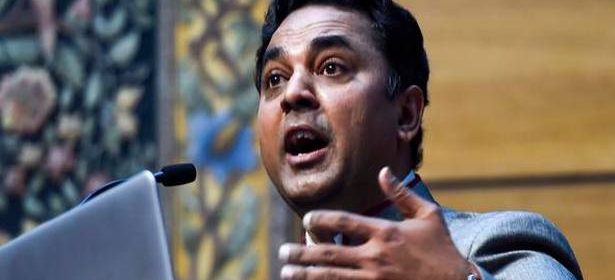Average recovery rate under the IBC is 45%, says CEA Subramanian

CEA’s remarks appeared to have been triggered by criticism about the low recovery rates and the processes of the IBC
Chief Economic Advisor Krishnamurthy Subramanian took on critics of the Insolvency and Bankruptcy Code (IBC) for labelling its performance as ‘skewed’ with low recovery rates, arguing they are ‘cherry-picking’ IBC data and a lot of the loans going through the IBC process were a result of ‘crony lending’ before 2014.
Speaking at the fifth annual day of the Insolvency and Bankruptcy Board of India (IBBI), the CEA pointed out that the average recovery rate is 45% under the IBC and this compares favourably with the U.S., where the recovery rate is 59%.
“Some analysts will say this 45% is skewed by one or two very large recoveries and they will exclude that and say there have been only 25% recoveries. Now as an economist, I actually want to highlight that those outliers have also resulted because of IBC and you cannot exclude them. You cannot cherry pick and then compute the average to say it is just 25%,” Mr Subramanian asserted.
The CEA’s remarks appeared to have been triggered by criticism about the low recovery rates and the processes of the IBC, most recently articulated by the Asian Development Bank (ADB).
In its Asian Development Outlook Update for 2021 issued last week, the Bank had noted that the resolution process for bad loans ‘remains skewed’ under the IBC of 2016. “Setting aside two large recoveries, only 31% of defaulted assets have been recovered,” it had remarked.
“That is not how economics works or policies are set,” said the CEA, emphasising that recoveries under the other debt recovery mechanisms such as tribunals and the SARFAESI Act have rarely exceeded IBC recoveries.
“Over a 17-year period, only in one year was the outcome from the SARFAESI Act better than IBC. In Debt Recovery Tribunals too, this had been the case only in three years,” said Mr Subramanian, who is also a part time member of the IBBI.
Emphasising that many of the loans going into the IBC process had originated from ‘crony lending’, he said the recovery in such cases will ‘obviously’ be lower.
On criticism that too many toxic assets are going into liquidation instead of reorganisation, the CEA cited US data for 2019 which show that 70% of 23,000 business bankruptcy filings led to liquidations. “When you compare it in an honest, legitimate way, you will infer that the IBC outcomes have been excellent,” he said.
Referring to the time consumed in IBC proceedings, Mr Subramanian said that even in the US, the average duration was 480 days before they undertook a reform in 2005, which has now reduced it to about 300 days.
He also suggested that the actual recovery rate in India’s IBC may be higher than 45% ‘if we do this number crunching a little bit more carefully so that the denominator doesn’t include contingent liabilities’.
Source: Read Full Article
